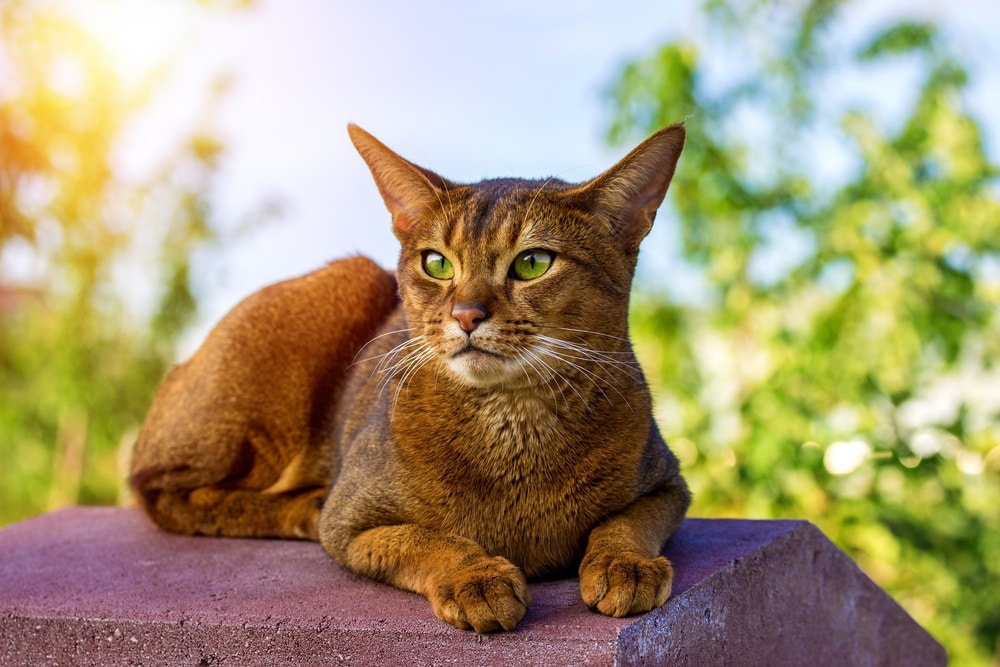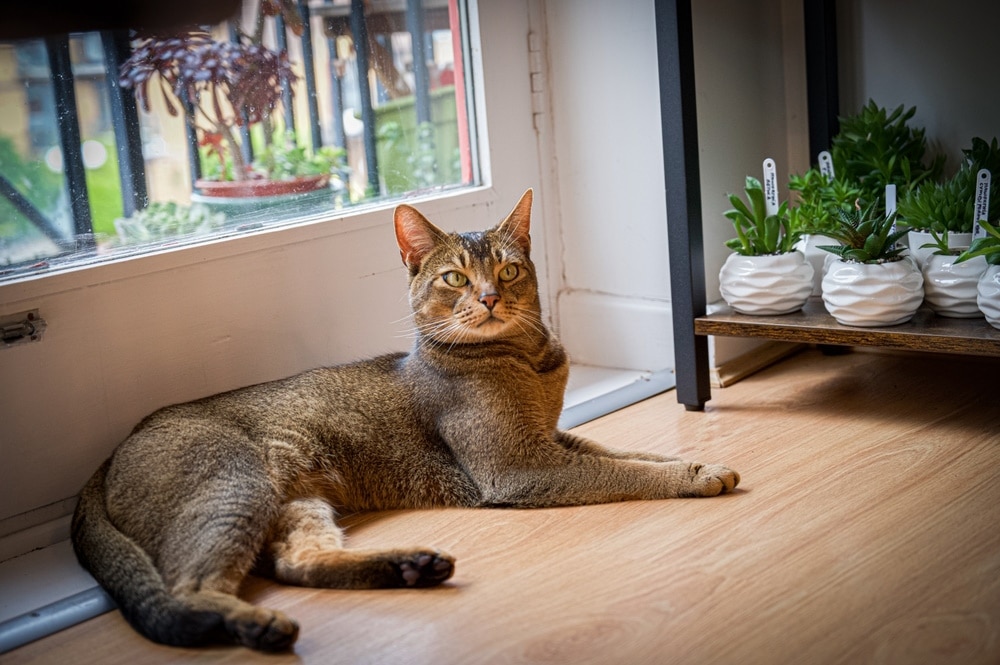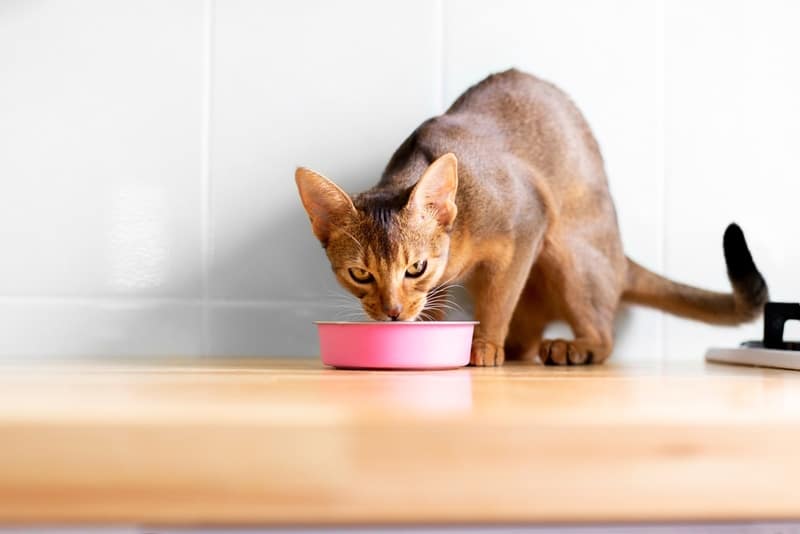With a slender, elegant appearance, the Abyssinian cat closely resembles the cat statues of Ancient Egypt. They are a striking breed with distinctive gold and cinnamon coats and large, expressive eyes on a slender frame.
Abyssinians are active cats, but it’s easy for them to become overweight or underweight. A fully grown Abyssinian cat can weigh between 6-12 pounds. Knowing what to expect from your Abyssinian kitten’s growth will help you ensure they have the perfect nutrition to grow strong and healthy.


Overview of the Abyssinian Cat
The Abyssinian Cat is a domestic short-haired cat with a distinctive ticked tabby coat. They are friendly and helpful cats that shed a little. These medium-sized cats are around six to 12 pounds and are very active. Often compared to dogs, Abyssinians love to spend time with their owners and demand attention. They do well in homes with existing owners and other cats, though they are rarely cuddle pets. Most of the time, these cats are on the go and exploring.
Although rarer than other domestic breeds, Abyssinians are officially recognized by major cat breed associations such as The Cat Fanciers Association (CFA), The International Cat Association (TICA), and the Canadian Cat Association ( CCA).

Abyssinian Cat Weight and Growth Chart
Abyssinians are tall and slender cats. They are usually about 8-10 inches tall, and about 8-12 pounds, with males being slightly larger than females.
| Age | Man | woman |
| 3 months | 3-4 pounds | 2.5–3 pounds |
| 6 months | 4–6 pounds | 3.5–5 pounds |
| 9 months | 6–8 pounds | 5–7 pounds |
| 1 year | 8–12 pounds | 6-9 pounds |
When Does an Abyssinian Cat Stop Growing?
Like some other cat breeds, Abyssinians grow quickly and reach their mature height between 10 and 12 months of age. They grow fastest in their first six months.

Factors Affecting the Size of the Abyssinian Cat
Although Abyssinians tend to fall within the 6-12 pound range as an adult, several factors can affect their adult size:
- breed: Full-blooded Abyssinians tend to be about the same size, but an Abyssinian with large parents or mixed with other cat breeds may be larger or smaller.
- Gender: As mentioned, Abyssinian males are usually larger than females by several pounds and inches.
- Nutrition and Activity: Nutrition and activity have a big impact on your kitten’s growth and weight. If you neglect to exercise or overfeed an Abyssinian, a naturally thin cat, they can become larger than the breed average. Conversely, an underfed Abyssinian may not reach its full height or weight.
Right Food for Maintaining a Healthy Weight
Kittens should be fed a quality kitten food until they reach 10 or 12 months of age. After that, your cat’s needs will vary based on their metabolism and activity level. You’ll need to monitor your cat’s intake to make sure they don’t become underweight or overweight. Obesity is a common problem in house cats, and Abyssinians have long, lean bodies with lean frames that can combat excess weight.

How to Measure Your Abyssinian Cat
If you want to track your cat’s height and weight for comparison, you can measure the height with a seamstress tape from the ground to the top of the shoulder. For weight, a gram scale is useful to track changes in a kitten’s weight until adulthood, after which a standard scale should be fine. One of the simplest ways to weigh your cat is by standing on the scale with your cat, then standing on the scale alone and determining the difference.
Weight ranges are a good guide to see if your cat is healthy, but the body condition score is more important than the actual number on the scale. The ideal body condition for your cat is a well-balanced body with a little fat covering the ribs, a visible waist that isn’t defined, and little belly fat. If you have any questions about your cat’s healthy weight, talk to your veterinarian.


Conclusion
Abyssinian cats are a beautiful breed that loves to play, run, and interact with their owners and other pets. Although they are generally healthy and low maintenance, Abyssinians live their best lives when given plenty of exercise and quality nutrition to support their energy needs.
Understanding your cat’s expected growth rate and how to maintain an ideal weight is an important part of keeping these cats in optimal condition. If you have any concerns about your cat’s diet, be sure to consult your veterinarian.
Featured Image Credit: Darya Lavinskaya, Shutterstock


